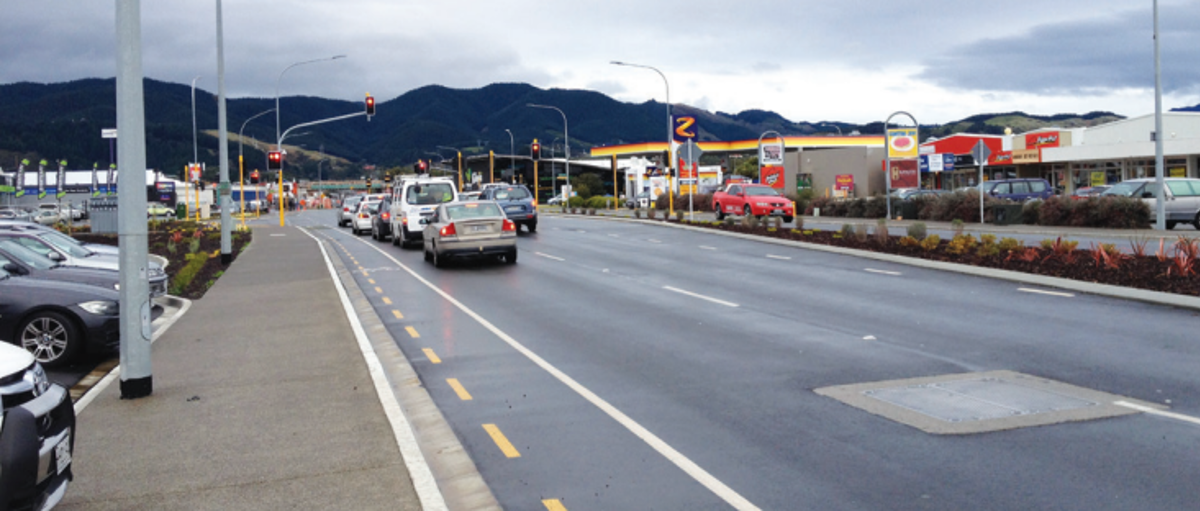Parking restrictions
Parking on roadside grass areas (berms) is a safety hazard. To park in these places, motorists may have to drive over footpaths and broken yellow ‘no stopping’ lines, which can be dangerous to:
- pedestrians
- mobility scooter/wheelchair users on the footpaths
- road users going past.
It also damages the berms and footpaths.
)
Please find other, legal, parks to avoid damaging public assets, and to help keep everyone in our community safe. Parking without due care on any road margin, including grass berm, verge, kerb, garden or reserve is not permitted under our Transport Bylaw 2022. Under the bylaw, there's a $40 infringement fine associated with this offence.
Broken yellow lines
Broken yellow lines are placed in areas where parking would cause an obstruction or danger to other road users. You cannot stop, wait, or park at any time where there are broken yellow lines. You may see broken yellow lines at:
- the approach side of pedestrian crossings or where parking ends
- near intersections preventing people from parking too close
- bus stops and taxi stands
- narrow or winding roads
- any place necessary for the safety of pedestrians or other road users.
)
Council considers and places any regulatory signs/markings on local roads, under Bylaws made under section 22AB of the Land Transport Act 1998 and part 6 of the Land Transport (Road User) Rule 2004. When deciding where to put linemarking, we need to follow and meet the transportation rules under the Act.
Installing broken yellow lines
We look at the specific site, road safety needs, and transportation rules to help us decide the best action to take. In general, we position the lines:
- where they're needed to identify areas of safety risk
- 6 metres before intersections.
Generally broken yellow lines won’t be placed over driveways. In some cases, we consult with residents and consider feedback before making a decision on whether to place yellow broken lines in that location.
Other parking restrictions
Where there are no broken lines, there may still be parking restrictions, and drivers need to be aware of these. Under the Land Transport (Road User) Rule 2004, you may not park your vehicle within:
- 1 metre of any vehicle crossing (driveway)
- 6 metres before or within any intersection.
This rule also recommends drivers drive to the conditions, which means adapting your driving behaviour to the local situation and layout of the roads.
Parking restriction maps
These maps are specific to each ward in Kāpiti.
- Ōtaki parking restriction maps [PDF 6.06 MB]
- Waikanae parking restriction changes map 1 – Waikanae Health/Countdown [PDF 216 KB]
- Waikanae parking restriction changes map 2 – Shoreline Cinema/Whakarongotai Marae [PDF 226 KB]
- Paraparaumu parking restriction maps [PDF 1.17 MB]
- Raumati Beach parking restriction maps [PDF 1.55 MB]
- Paekākāriki parking restriction maps [PDF 436 KB]